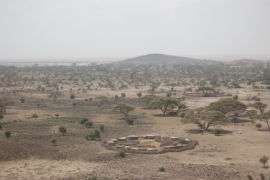New Atlas charts Kenya's natural assets

The Ministry of Environment and Natural Resources of the Government of Kenya enlisted support from a consortium of National and international experts and researchers, including ecologists from the University of York, to produce the first Biodiversity Atlas of the Natural Capital for Kenya.
The Atlas project, which was coordinated by the African Conservation Centre (ACC), brought together national agencies, universities, non-government organizations, and academic institutions.
As well as providing a detailed assessment of Kenya's biodiversity the Atlas provides a projection of how this natural resource may alter under predicted climate and land use changes.
'Kenya Natural Capital: A Biodiversity Atlas' is a richly illustrated guide to Kenya's wealth of plant and animal life. Ranging from coral reefs to high mountain communities of Mount Kenya and from deserts and savanna grasslands to forests and Great Rift Valley lakes, the tapestry of habitats ranks Kenya among the richest vertebrate regions on earth.
The York Institute for Tropical Ecosystems in the Environment Department at the University of York coordinated the work on plant diversity – the foundation for the more iconic large mammal diversity of Kenya's National Parks. The atlas documented a wide disconnect between the locations of protected areas and plant diversity - suggesting reduced effectiveness of protected areas in conserving Kenya's plant diversity.
Dr Rob Marchant, from the Environment Department at York, said: "Large areas of evergreen forests have been lost from East Africa during the 20th century, resulting in carbon emissions, reduced habitat for forest dependent biodiversity and a reduction in ecosystem services essential to support a growing and developing population."
The Atlas provides an assessment of the ecological services biodiversity that will allow the Kenya Government to make policy decisions that value natural capital to the national economy and human well-being.
Dr Jonah Western from the African Conservation Centre said "The Atlas shows how Kenya's varied landscapes and climate have shaped biodiversity, ecosystems, cultures and livelihoods. It also documents the threats to species, habitats and natural resources, the conservation steps Kenya has taken to protect biodiversity and the identifies the gaps that remain."
The concluding chapter points the way ahead for an integrated conservation framework based on auditing natural capital to meet Kenya's Vision 2030 for a green economy. Written for schools, universities, the public at large, Government and private sector planners and managers, the atlas will be reproduced in open access electronic form and continuously updated and expanded. It is envisaged the Atlas will be a living product to underpin the National development and sustainable use of Kenya's natural capital.
Provided by University of York



















